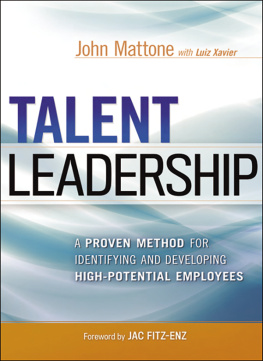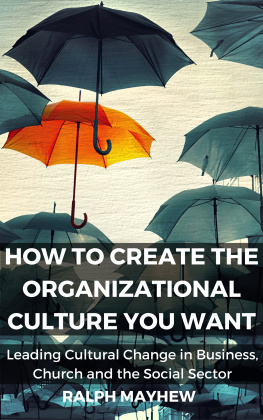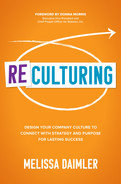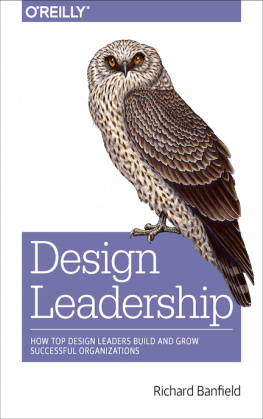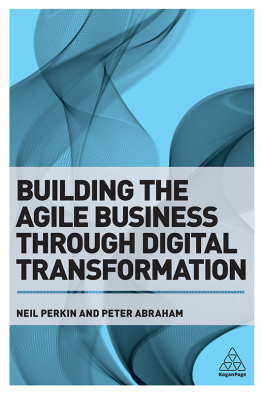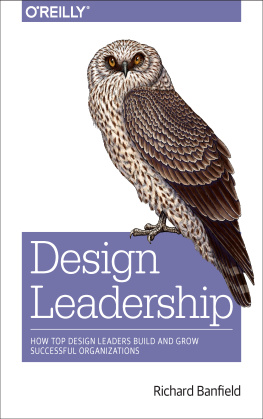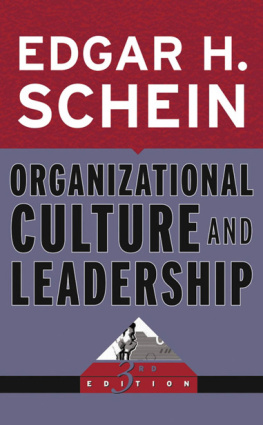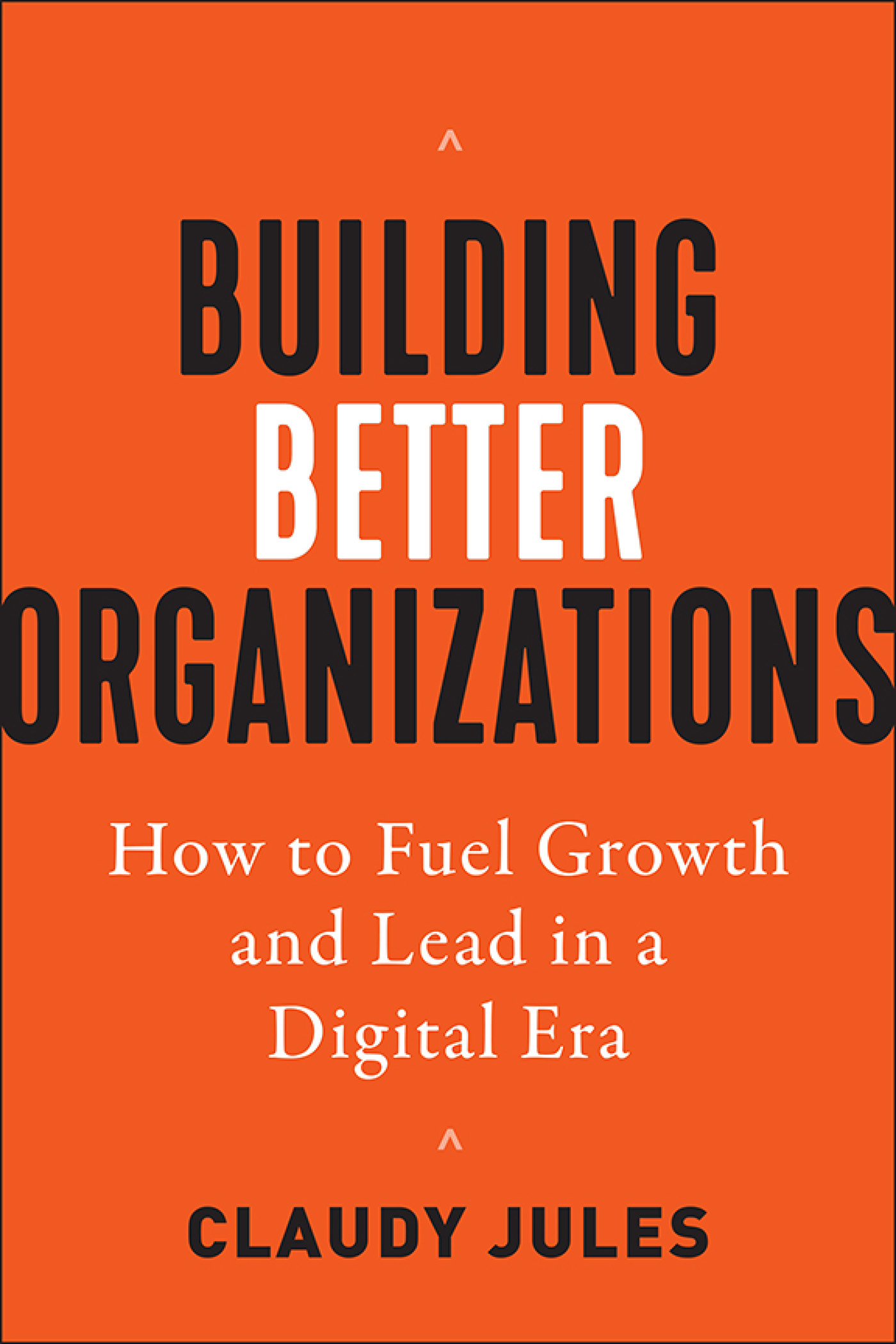Contents
Guide
BUILDING
BETTER ORGANIZATIONS
BUILDING
BETTER ORGANIZATIONS
How to Fuel Growth and Lead in a Digital Era
Claudy Jules

Building Better Organizations
Copyright 2022 by Claudy Jules
All rights reserved. No part of this publication may be reproduced, distributed, or transmitted in any form or by any means, including photocopying, recording, or other electronic or mechanical methods, without the prior written permission of the publisher, except in the case of brief quotations embodied in critical reviews and certain other noncommercial uses permitted by copyright law. For permission requests, write to the publisher, addressed Attention: Permissions Coordinator, at the address below.

| Berrett-Koehler Publishers, Inc.
1333 Broadway, Suite 1000
Oakland, CA 94612-1921
Tel: (510) 817-2277, Fax: (510) 817-2278
www.bkconnection.com |
Ordering information for print editions
Quantity sales. Special discounts are available on quantity purchases by corporations, associations, and others. For details, contact the Special Sales Department at the Berrett-Koehler address above.
Individual sales. Berrett-Koehler publications are available through most bookstores. They can also be ordered directly from Berrett-Koehler: Tel: (800) 929-2929; Fax: (802) 864-7626; www.bkconnection.com
Orders for college textbook/course adoption use. Please contact Berrett-Koehler: Tel: (800) 929-2929; Fax: (802) 864-7626.
Distributed to the U.S. trade and internationally by Penguin Random House Publisher Services.
Berrett-Koehler and the BK logo are registered trademarks of Berrett-Koehler Publishers, Inc.
First Edition
Hardcover print edition ISBN 978-1-5230-0044-9
PDF e-book ISBN 978-1-5230-0045-6
IDPF e-book ISBN 978-1-5230-0046-3
Digital audio ISBN 978-1-5230-0047-0
2022-1
Book production: Westchester Publishing Services
Cover design: Adrian Morgan
For Cecile, Marie, and Adrienne and the love of learning
Contents
Preface
There are no CEOs alive who dont want their organization to operate more effectively. Nor is there an investor alive who doesnt worry about scaling the organizations they invest in to drive profitable growth. This book offers a playbook for doing both of those things and more: building better organizations in the digital era.
Without question, the pandemic has pulled the digital world front and center. However, whats surprising is how advances such as artificial intelligence (AI) have highlightednot diminishedthe importance of familiar organizational topics such as talent, leadership, and culture. Property and equipment are no longer a companys most valuable assets; people are.
Nowhere is this truer than in tech companies. Among the S&P 500, the value of intangible assets such as human capital and culture have risen since 1975 from 17 percent of total assets to a stunning 90 percent in 2020. As founders, investors, and board directors alike catch their breath after the fallout from COVID-19, they will do well to examine the organizational practices that may no longer serve them.
To begin with, leaders must rethink their value-creation strategies and overcome the organizational challenges of scaling. The way forward is to hone their digital edge to enhance their organizational edge by adopting the tenets of an organizations health in seven vital areas that are a focus of this book: strategic direction, culture, leadership, talent, organizational design, EID (equity, inclusion, and diversity), and well-being. No matter what type or size of business, those essential conditions can be leveraged for increased value and growth.
AI is what will get us there. Advances in technology such as machine learning and quantum computing, which can help companies monitor and measure improvements as well as extrapolate next steps, enable leaders to build organizations that can compete and win in the future.
Finally, an investor mindset will enable leaders to invest wisely in the technology (and leveraging that tech) that sets their organizations apart. By investing in the health of an organization and by investing equally in digitally enabled strategies and business models for the AI era, companies win. In this book, I chose to draw examples from companies in the portfolios of private equity (PE) and venture capital (VC) firms. Why? Because while PE and VC are not historically known for their focus on warm and fuzzy organizational aspects like culture, design, or employee well-being, in recent years such investment firms have demonstrated a deep understanding of todays business imperative: to scale and grow, companies must get the organizational elements right. That begins with having the right strategy, the right CEO to drive it, and the right top talent, culture, and org design to realize a companys potential. More recently, investment firms have recognized, too, the critical importance of other org topics such as EID and employee well-being.
My point of view about organizational effectiveness developed over more than 20 years of shaping, testing, and evolving the ideas in my work as a consultant, advisor, practice builder, and researcher. I cut my teeth in organization development by way of instrumentation, where I first understood the powerful impact of leadership assessments on organizational change. While I completed my graduate training in the behavioral sciences (including interpersonal, group, and organizational dynamics), I was introduced to strategy consultingfocused on the management sciences, including competitive and industry analysis, forecasting, and business case development.
During those formative years as a consultant, I began to integrate both content and process consulting and developed the belief that both had merit. Why? Because I observed again and again how the strategic and economic plan of a businessits business strategyis only as effective as the corresponding behavioral agenda of that businessthe organizational strategy. Today I think of my work as an animated synthesis of the tech stuff and the org stuff. I focus on organizational elements for companies seeking to scale and pivot quickly in the age of AI. I do this by drawing on observations, professional experiences, and insights gained from advising fast-growing startups, government agencies, nonprofits, and businesses.
Despite their differences, I observed all these organizations share one consistent characteristic: when they invest in the essentials that make up organizational health, they improve the odds of delivering a step-change in performance. As these essentials align and function better, organizations overcome inertia and improve their odds to scale and grow.
Those new insights compelled me to write this book, which I believe fills a vital gap in the literaturenamely, how organizational health, digital, and an investment mindset can work in tandem to build better organizations. Moreover, by exploring organizational health, I hope to spur dialogue around a different way to boost the performance of companiesand perhaps to deepen how organization development gets taught to students in graduate and MBA programs.


